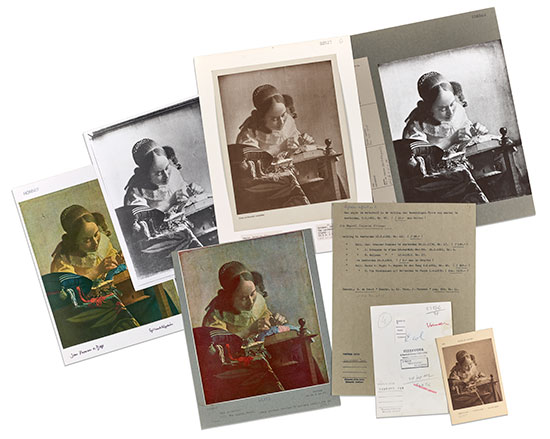PhotoTech
This project digitizes the painting, drawing, and print collections (approximately 700,000 items) from the Getty Research Institute's Photo Archive, which contains over two million photographs depicting works of Western art, architecture, and decorative arts from antiquity to the modern era.
The Photo Archive documents artworks in various states over time, lost and looted art, artworks held in private collections, and works of lesser-known artists excluded from the canon. Annotations on the images supply myriad details that help to document attributions, provenance, and the art market at particular moments in time. This information, currently available only in physical form, will be made discoverable for scholars in a digital environment and will be linkable to other datasets such as the Getty Provenance Index, thereby enhancing the growing network of data surrounding artworks online.
PhotoTech leverages the Research Institute's role as a founding member of Pharos, an international consortium of 14 art research institutes in North America and Europe offering digital access to their respective photographic archives, and raises an array of compelling questions for the fields of art history and information science.
Among them, what can photographic archives tell us about the past and future of art history? How can existing methods of collection processing and digitization be improved or made more efficient, in order to accommodate larger, more diverse image collections? How might technologies, such as data visualization, computer vision, or linked data, offer new ways to analyze and understand historic and contemporary image collections, and the troves of visual and textual information they contain? What types of research questions can be supported by visual search against images with limited descriptive metadata? How can existing metadata be used to train deep neural networks and automate metadata generation for unprocessed items?
PhotoTech applies the Getty's expertise in semantic technologies, IIIF, digitization, digital art history, metadata, and software development to address these questions, not only furthering interdisciplinary innovation but also opening up the Photo Archive to even broader audiences.
Among them, what can photographic archives tell us about the past and future of art history? How can existing methods of collection processing and digitization be improved or made more efficient, in order to accommodate larger, more diverse image collections? How might technologies, such as data visualization, computer vision, or linked data, offer new ways to analyze and understand historic and contemporary image collections, and the troves of visual and textual information they contain? What types of research questions can be supported by visual search against images with limited descriptive metadata? How can existing metadata be used to train deep neural networks and automate metadata generation for unprocessed items?
PhotoTech applies the Getty's expertise in semantic technologies, IIIF, digitization, digital art history, metadata, and software development to address these questions, not only furthering interdisciplinary innovation but also opening up the Photo Archive to even broader audiences.
 Photographs of reproductions of Johannes Vermeer's The Lacemaker (ca. 1669) and accompanying annotations from the Photo Archive. Study Photographs of Dutch Paintings and Drawings. The Getty Research Institute,
Photographs of reproductions of Johannes Vermeer's The Lacemaker (ca. 1669) and accompanying annotations from the Photo Archive. Study Photographs of Dutch Paintings and Drawings. The Getty Research Institute,